Betta fish: varieties, selection, care and reproduction of "fighting" fish
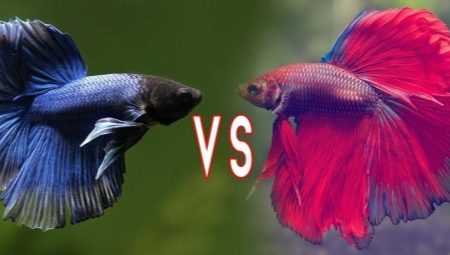
Rooster fish are some of the most controversial pets you can buy for an aquarium. Their quarrelsome nature is legendary, and enthusiastic descriptions of the fighting aquarium breed, left by amateurs, look very attractive. Some believe that it is impossible to keep this species in the same aquarium with other individuals. What you need to know about this unusual pet in order not to be mistaken in choosing what unique qualities this fish has and what is unusual about this fish, we will tell you later in the article.
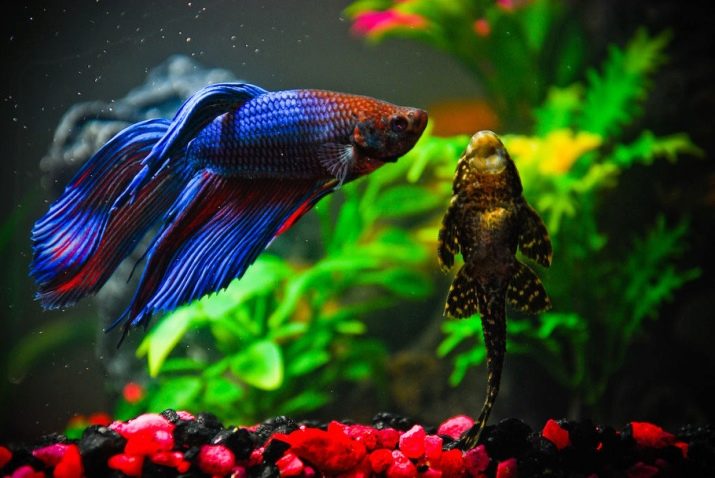
Description
Different subspecies of cockerels differ mainly in color and length of fins. Its second name is "Fighting fish" they got it thanks to the participation of wild individuals in battles, where the aggressiveness of the representatives of the macropod family was in great demand. In the heat of battle, the cockerel fluffs up its fins and turns into a swift semblance of ball lightning. But even in a calm state, this fish can become a real decoration of a large or small aquarium.
The decorative fighting fish Betta splendens lives in the natural environment in the regions of Southeast Asia in ponds, rivers with stagnant or low-flowing water. The first mentions of keeping them as pets appeared in 1800 and related to Siam, where specific battles of aquatic inhabitants were popular at that time. True, it would be very difficult to recognize them as aquarium beauties. The wild species had a rather inconspicuous brown body and short fins.
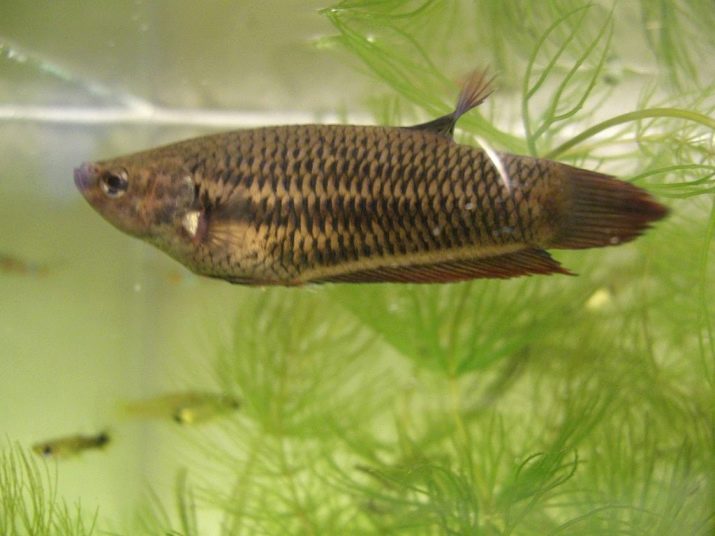
Fighting fish got outside of Thailand only a century after the start of breeding work. It was thanks to the transition to an international scale of their breeding that it was possible to obtain individuals with a bright color. The new breed of cockerels were bred in North America in the first half of the 20th century, and since then there have been many aquarium subspecies of the most incredible colors.
The wild form of Betta splendens has a characteristic body coloration - light olive gray with stripes on the body, they can be longitudinal or transverse. The body length in fish varies in the range of 4-5 cm, males are larger. Decorative cockerels often grow up to 10-15 cm and have original fins.

Bright color and abundant decorations are characteristic only of males; females are much more modestly endowed with these advantages.
For cockerels, like for other labyrinth fish, breathing of different types is characteristic, they are able to climb up and breathe air. Other features include:
- characteristic oval outlines of the body;
- flattening of the body from the sides;
- rounded tail and dorsal fins;
- a variety of colors from monochromatic to multi-colored;
- changing the brightness of the color when colliding with the enemy - it becomes richer;
- nesting and caviar care is carried out by males;
- developed territorial instinct.
All these features should be considered when choosing cockerels as pets for your home aquarium.
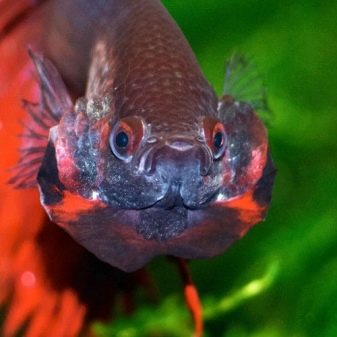

Age and life expectancy
If it is not a fry, but an adult that is purchased, it is important to determine the age of the fighting fish. There are several basic evaluation criteria with which you can make approximate calculations.
- Body length. The standard sizes of adult fish are 6-9 cm, the young grow up by 11 months. Accordingly, it will not be difficult to determine the age. For purchase, it is better to choose individuals with a length of 2-3 cm that have not yet reached puberty.
- Fin length. If we are talking about males, then young animals always look more modest. The fish acquires its luxurious long tails and "feathers" as it grows up. In the old individual, the fins will be frayed, split.
- Brightness of color... If there are several cockerels living in the aquarium at once, the younger ones will be easily distinguished by their bright coloration. It is much richer than that of adult fish. In addition, with age, the pet will have a characteristic hump, the eyes will acquire a whitish tint. These signs should be taken into account when choosing fish for home keeping, because bettas live no more than 1-2 years.

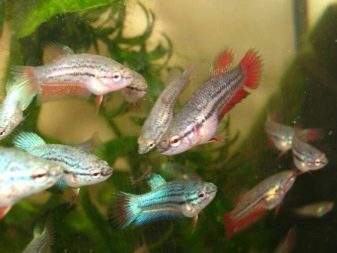
Views
The Thai fighting fish is distinguished by a variety of color options. Thanks to the work of breeders, unattractive in nature, through the efforts of specialists, it bloomed with bright colors. Today there are white and marble, black, bright red, blue, purple subspecies, dragon, masquerade and piebald, they are one-color, two-color, multi-color. According to their decorative characteristics, cockerel fish can be of various types.
- Poster, with shorter fan-shaped fins, wider than other species.
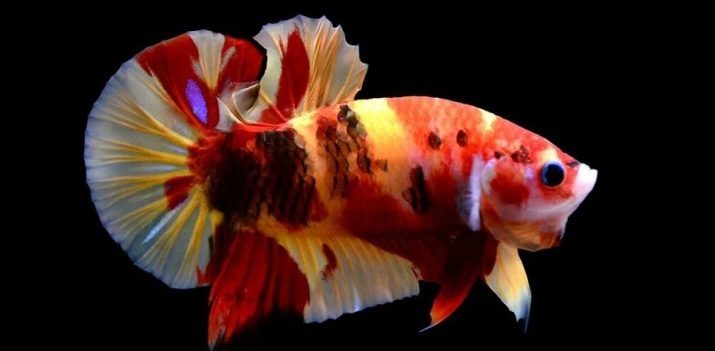
- Veil-tailed, with long veil ornaments on the body of the male. Both the fins and the tail are double. Therefore, the fish can be called two-tailed.
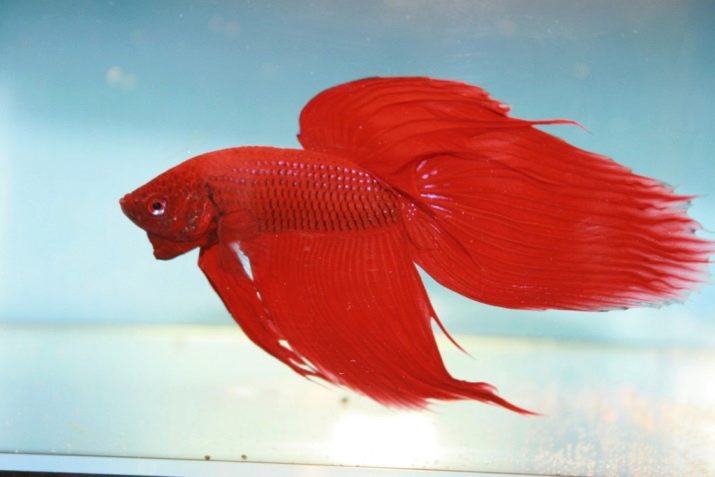
- Crescent-tailed or half-moon. They are characterized by a crescent-shaped tail.
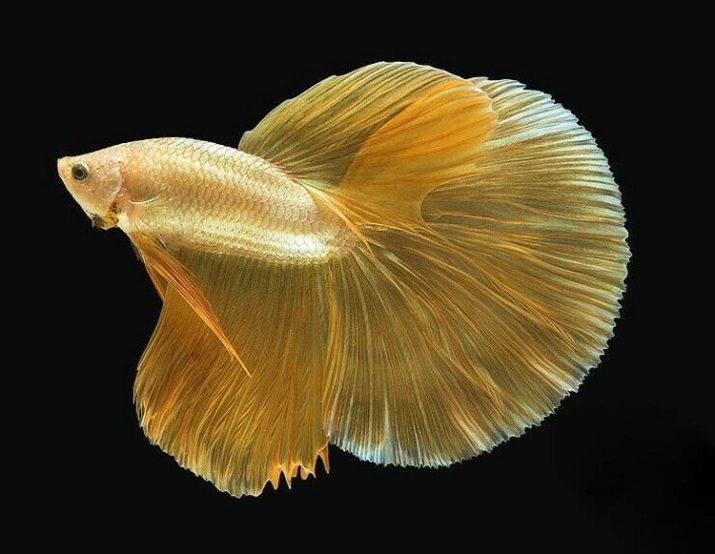
- Crown-tailed. The fish are decorated with a tail divided into separate crown-shaped "feathers". The crown-tailed type is one of the most beautiful.
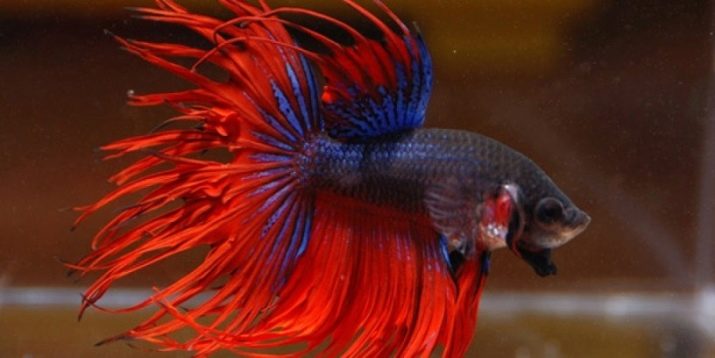
- Round-tailed, with rounded fin processes. The closest in appearance to the natural form and the least decorative.
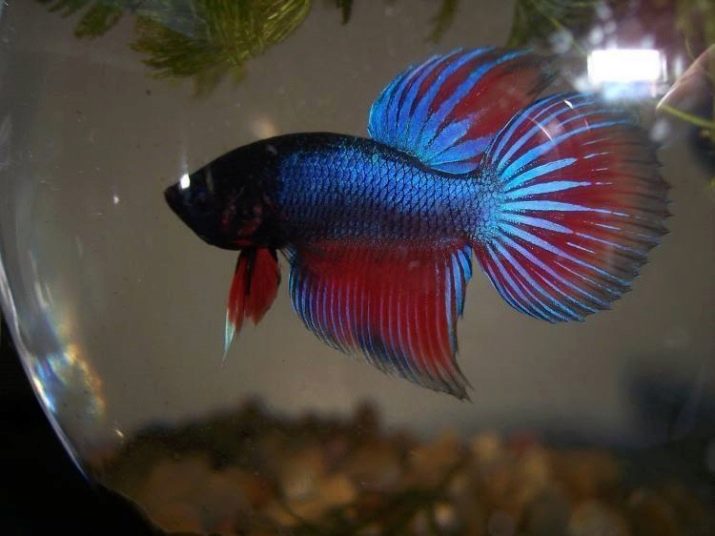
- Royal - these are the names of the largest varieties. Their fins are fan-shaped, not very long.
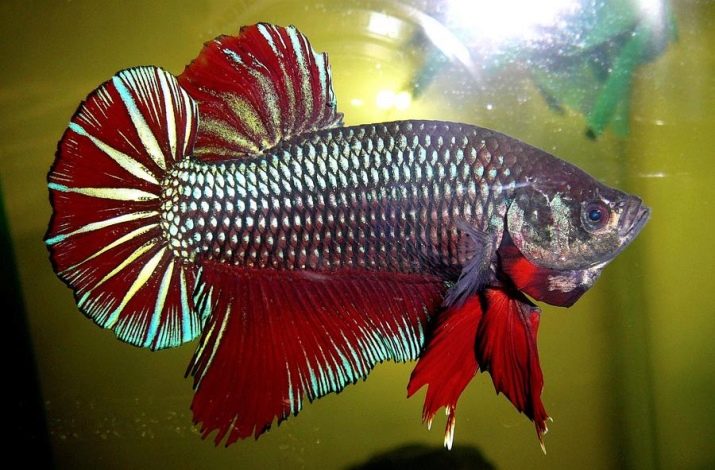
- Dumbo. Males have very long pectoral fins, which, during movement, flutter interestingly in the water, like the ears of an elephant.
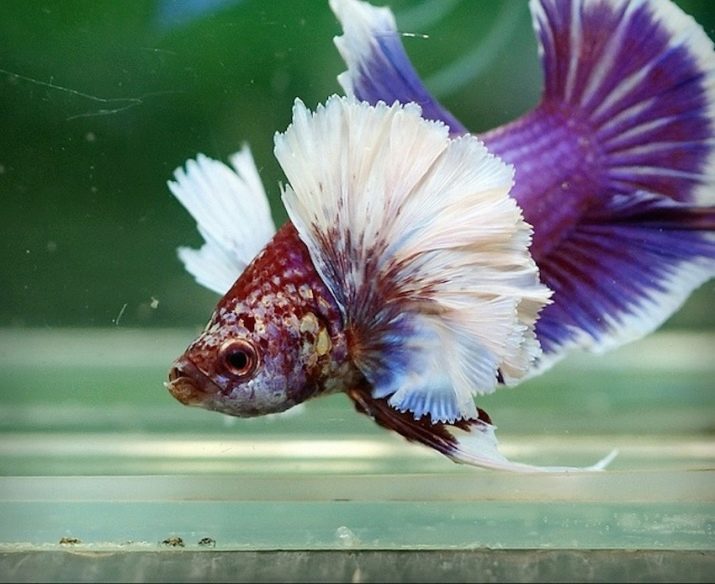
- Flag-tailed. These fish have a rectangular tail and fins, similar to a flag.
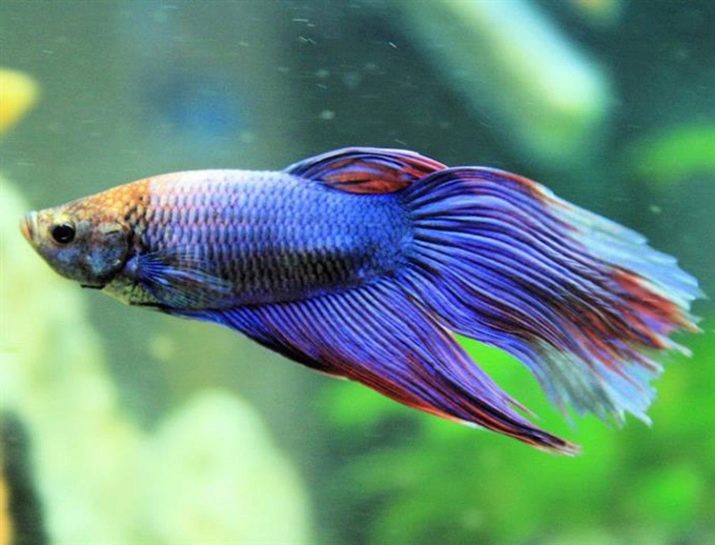
- Brush-tailed or spear-tailed, with decorative elements in the form of a brush or spearhead. The lateral segments of the tail are shorter than its central part.

- Delta-tailed. With fins and a tail in the form of the Latin letter delta.

These are the main decorative varieties. But breeding work does not stand still, and new interesting subspecies of fighting fish regularly appear.
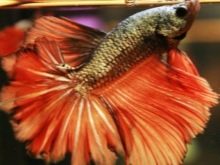
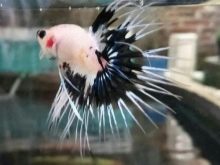
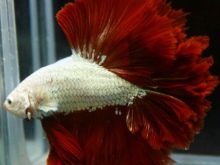
How to choose?
When choosing a rooster fish for home keeping, it is important to consider a number of rules.
- Purchase a pet only in trusted stores or from breeders. The better the conditions of detention, the higher the likelihood that the fish will easily adapt to a new place of residence. It is better to choose small specialty stores that cooperate with breeders.
- Take small fish. Young males have a body length of 2-3 cm; larger fish can live in a new place for a very short time.
- Do not purchase a pet from a clearly dirty, muddy aquarium. Avoid taking fish from an overcrowded tank with obvious signs of stress.
- Pay attention to your health status. The eyes should be clean and clear, scales free of mucus and spots, bright color, long fins, without kinks or breaks. A healthy fish is active, curious, and swells at the sight of danger.
- Determine gender immediately. For solitary keeping, it is better to take a more decorative male. They are brightly colored, have characteristic fins and a tail.
These basic guidelines will be enough to guide you through the purchase of a fighting fish for your home aquarium.
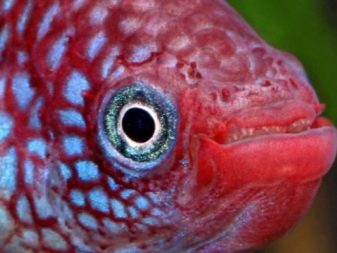
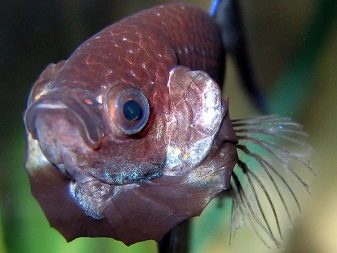
Content rules
Good housing conditions are essential for the comfort of your cockerel fish. These pets need:
- clean clear water, you will have to change it regularly;
- the plants on which the fighting dance will rest;
- interesting decoration of the bottom with decorations.
Avoid immersing sharp objects in the aquarium, otherwise, the fins may be damaged. You can wait for the tail to grow back, in this case, you can take a long time.
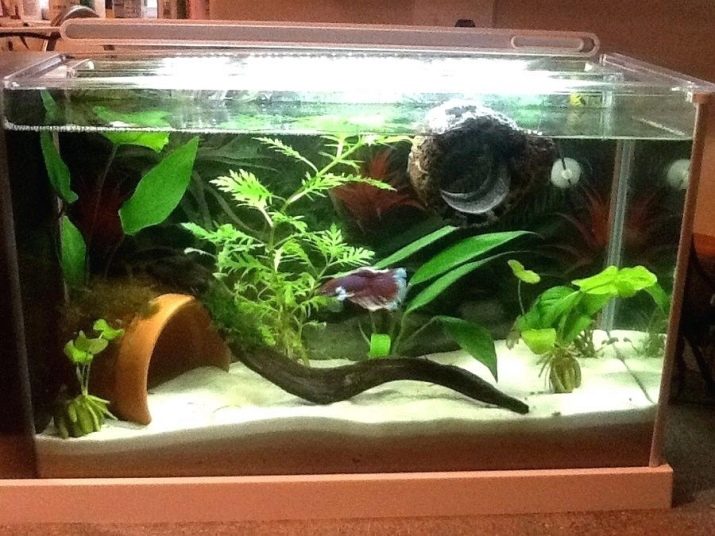
Free space is also required - During the day, the fish love to play in the water, they often stay closer to the surface. If you turn off the backlight at night or do not use it, the pet sleeps in the thickets of greenery.
It is better to choose a rectangular tank for keeping - in a round aquarium, males look beautiful, but they are under serious stress.
One individual needs at least 3-4 liters of water, it is better if, with a single content, the capacity of the tank reaches 10-15 liters.

In a spacious already inhabited aquarium, you can plant heterosexual cockerels, or delimit compartments with partitions for each individual in a monobreed keeping. Holes are made in them to ensure free flow of water. Plants are planted near the makeshift wall to create a sense of isolation for each male. Any aquarium cover required — the fish are jumpy and curious.
For aquarium keeping, the water temperature must remain constant, not lower than + 18 ... 19 degrees Celsius.
Betta fish can do without additional heaters. But optimal for cockerels, as well as for other tropical species, indicators in + 24 ... 28 degrees Celsius are considered. Other characteristics of the environment: PH 6-7.5, hardness not higher than 15 units. As a home remedy for antibacterial treatment salt is added to the water - 0.5 tsp is enough for 3 liters of liquid.

Changing 1/6 of the medium in a small aquarium is needed up to 10 times a month, in a large one - every 14 days or as needed, bubbles on the surface - the future nest is removed with the rest of the pollution.
Aeration for labyrinth fish will be unnecessary, it is needed only for the fry of the first month of life. But the filter does not need to be neglected, but it is enough to choose a low-power model.These fish do not tolerate a strong current; in nature they live in reservoirs with almost stagnant water. When choosing a soil, it is worth giving preference to fine gravel, sea or river sand of a dark color, pre-treated against bacteria and parasites.
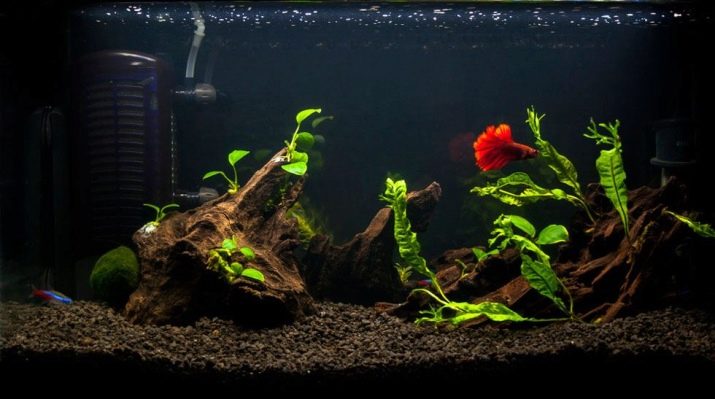
Breeding
You should study the nuances of breeding fish in an aquarium at home in advance. Males are not viviparous, but it makes no sense to keep a couple together all the time - the pets will show aggression. But it is quite easy to distinguish a female from a male.
In the male, the fins and tail are decorated with long veil processes, the body is slender and elongated. The female is smaller, more compact, with a more rounded body. She has shortened tail, pectoral and dorsal fins, fish older than three months have a characteristic white area in the lower abdomen, in front of the tail.
Individuals that have reached the age of 6 months are ready for reproduction.
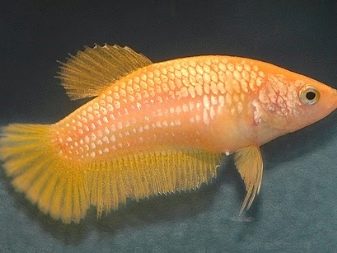
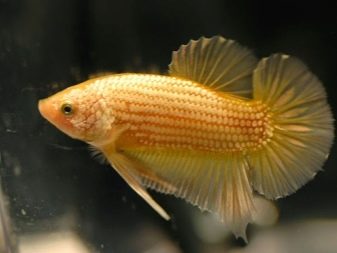
It is recommended to breed fish in a dedicated small spawning box with a volume of 4-5 liters. To equip it, you must:
- abandon the flooring;
- provide muted, diffused backlighting;
- plant 2-3 green small-leaved plants;
- pour water to a level of 10-15 cm from the bottom;
- ensure the saturation of the environment with oxygen.
Water is poured into the spawning grounds after settling for 3-4 days, heated to a constant temperature of + 28 ... 30 degrees Celsius.
Before the start of the breeding season, fish are kept separately for 10-14 days, and they are provided with abundant food rich in protein.
The temperature parameters of the environment should exceed the usual by 2-3 degrees, changes are made more often, 1-2 times within 7 days.
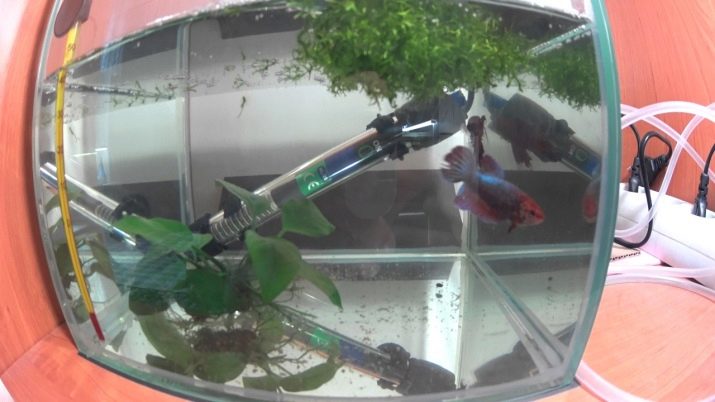
Breeding process
The male is placed first in the container allocated for spawning. You need to give him time to adapt and build a nest. After that, you can add a female to which the cockerel will be able to demonstrate the results of his labors. If they manage to reach an agreement, the formed couple lays eggs and fertilizes them. In the process, the body of the female is wrapped around the fins of the male - this is how he squeezes out the eggs.
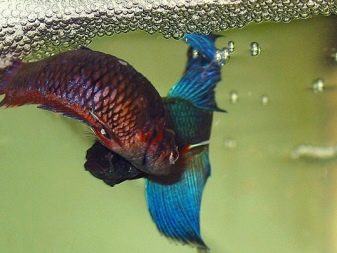
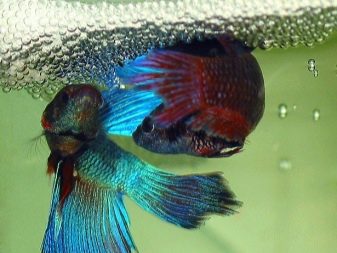
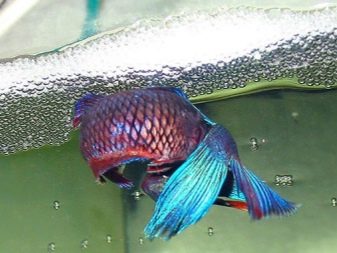
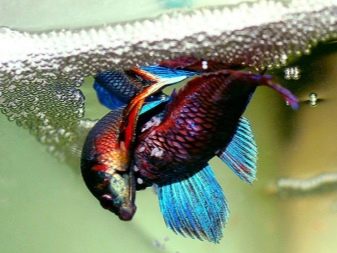
Upon completion of spawning, the cockerel by mouth transfers the eggs that have fallen to the bottom into the foam nest created by him. The father takes care of the offspring until the fry appear.
At the end of the spawning period, the female must be planted so that she does not suffer from the aggression of the partner.
The male will remove the dead eggs by himself, returning the fallen eggs to the nest.
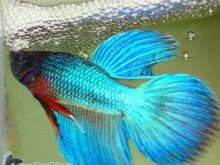
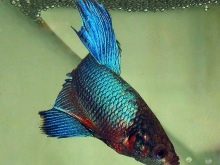
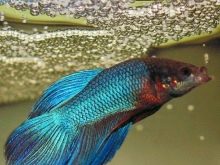
Growing young animals
The typical time from fertilization to birth in males is 24 to 48 hours. After this period, babies appear from the eggs. It takes them another 3-4 days to eat their yolk membrane. Then the fry swim out of the nest in search of additional food. At this moment, it is time to remove the male, otherwise he will try to return the young to its place, leaving him without food.
The starter feed for cockerel fry is fairly simple. Live dust, dried egg yolk, microscopic Cyclops larvae are suitable. Ready-made flakes are not recommended as they can slow down the development of the fish.

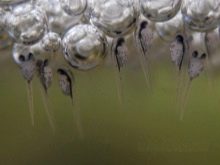
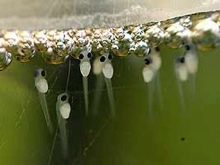
Upon reaching three weeks, the fry are sorted, separating the larger individuals from the smaller ones.
From the second month of life in a children's aquarium, you can turn off the mandatory aeration, since the organ necessary for breathing is formed at 4-5 weeks.
The transition to an adult housing regime begins for young animals at the first manifestation of territorial instincts.
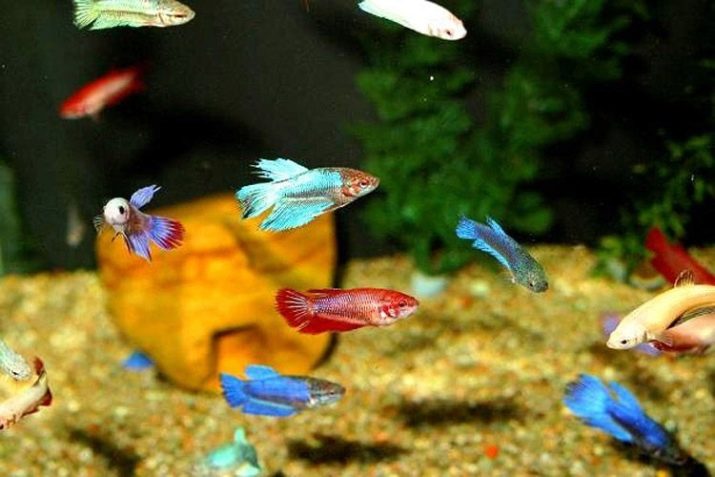
Compatibility with other fish
Success in joint keeping largely depends on the amount of free space and the aggressiveness of a particular individual. Females do not fight as often and are generally less aggressive. In addition, even 2 individuals of different sexes usually do not live in the same territory. The maximum that you can afford - hooking the female for the spawning period, when the male has built the nest necessary for the incubation of eggs in a common reservoir and is ready for courtship.
Representatives of this breed fight with any size rivals, and this is due primarily to developed territorial instincts.
But usually you can add a beautiful fighting fish to an already inhabited aquarium with a volume of more than 100 liters, getting a completely peacefully coexisting underwater kingdom in miniature.
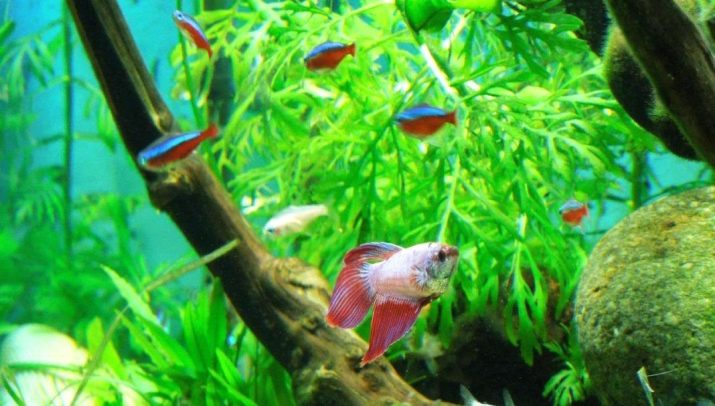
Regardless of the individual temperament of a particular fish, groups of breeds can be distinguished that are more or less compatible with rather aggressive neighbors in the aquarium.
- Well compatible species... These include catfish corridors and other non-aggressive individuals, thorns.
- Conditionally compatible species. This group includes cardinals, barbs, guppies, neons, labeos.
- Completely incompatible species. Piranhas and other predators, small fish up to 4 cm long, brightly colored individuals are not recommended for joint keeping. Settling to goldfish threatens the cockerel with hypothermia.
Solitary content is considered optimal. Males need enough space and solitude, and have little desire for the company of other inhabitants of the aquatic world.
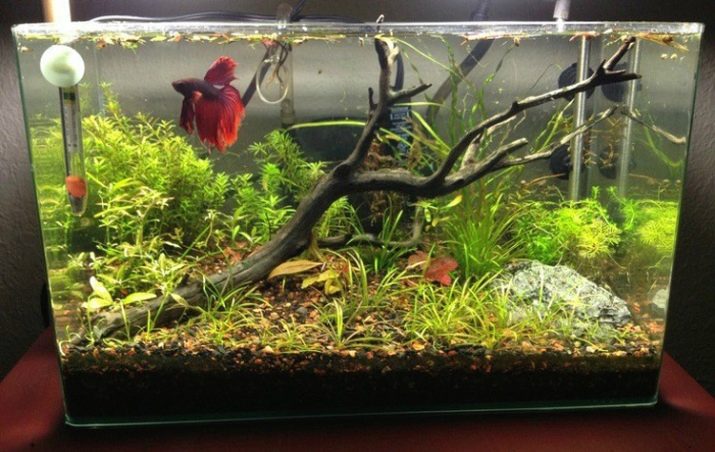
Aquarium decoration
Setting up a comfortable fighting fish aquarium will require the right set of decorations.
Plants here can be imitation, artificial or natural. The general requirement for them is the absence of sharp, jagged edges.
For artificial options, the best choice would be making decor made of natural silk - it is safe for the inhabitants of the reservoir, does not affect its environment.

Landscaping of an aquarium for cockerels with live plants is carried out using pots and by planting in the ground. The volumes of plants can be up to 1/3 of the total available space, but they are placed along the walls, without interfering with the swimming of the fish. Driftwood, stones without sharp edges that have undergone high-temperature treatment with boiling water or calcined in the oven are used as bottom decorations. Betta fish love caves, castles and other decorations.
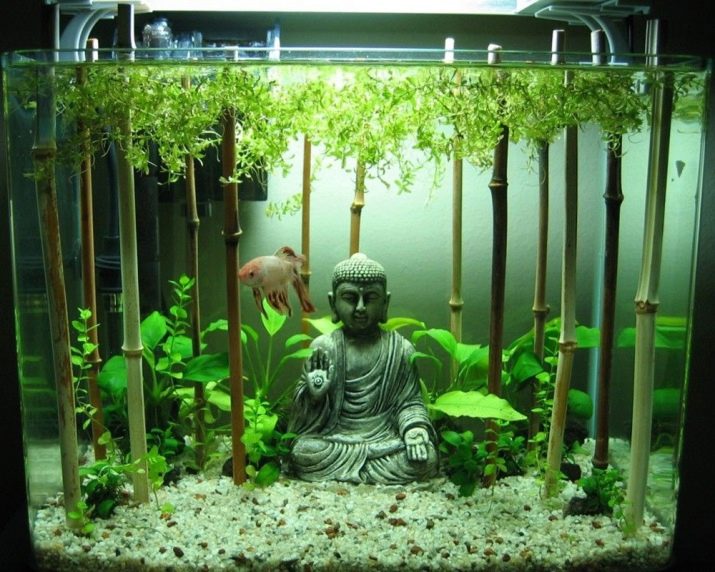
Possible problems
The main problems faced by the owners of cockerel fish are associated with a change in the appearance of pets. It so happens that the male peeled off and lost his attractive appearance, requires the recovery of the female after a fight - these and other basic problems are worth considering in more detail.
- Bubbles appeared on the surface of the water. Foam in a cockerel aquarium is not a cause for alarm. So the male prepares the nest for subsequent spawning. It can be simply removed if breeding is not planned.
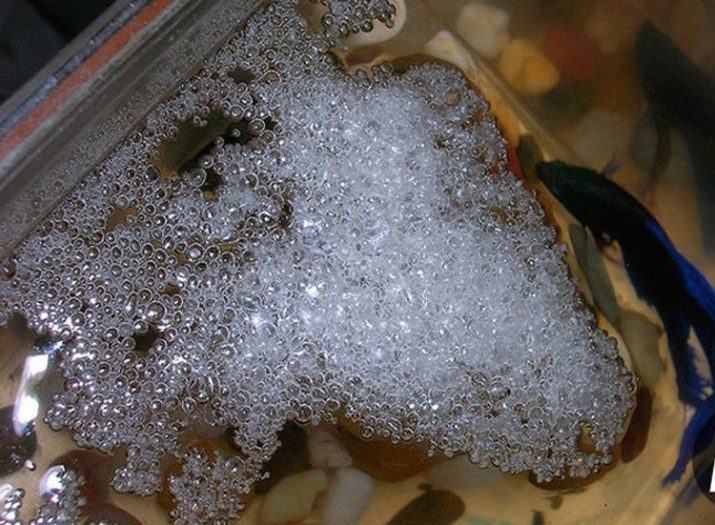
- The fish lies on the bottom and breathes heavily, movement of the gills is noticeable. This behavior may be typical for older fish. But similar symptoms are observed in young males during the acclimatization period, as well as at extremely low ambient temperatures (below +19 degrees Celsius). It is worth checking the water parameters for nitrates as well - there is a possibility that the fish has received chemical poisoning.
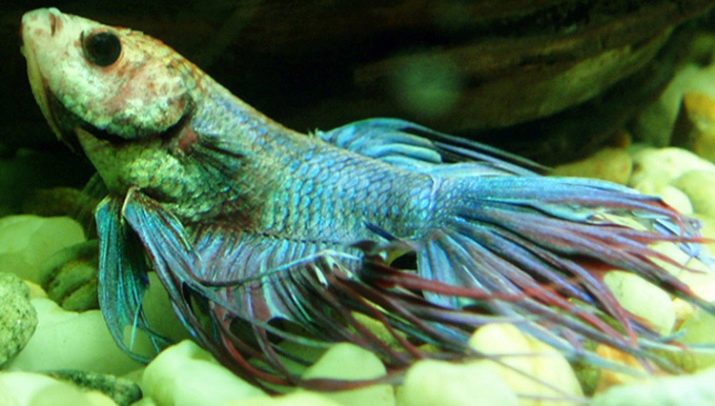
- There are white spots or plaque on the body... If it is observed on the fins, it is fin rot - a dangerous specific disease in which the fish completely loses its decorative effect. On the body, white spots are formed with ichthyophthyriosis, if other fish are present in the aquarium, quarantine will be needed, the risk of death is high. Fluffy "snow" plaque, similar to mold, is saprolegniosis, the pet needs treatment with salt baths and antibiotics, it is necessary to go to the veterinarian.

- The cockerel does not eat. The lack of appetite in these fish may be due to relocation to a new place or a change in diet. Pets can easily ignore the new food, especially when it comes to dry compressed flakes. In this case, replacing the finished diet with a live one - bloodworms, brine shrimp will help correct the situation. And also fish can refuse food with too large fractions.
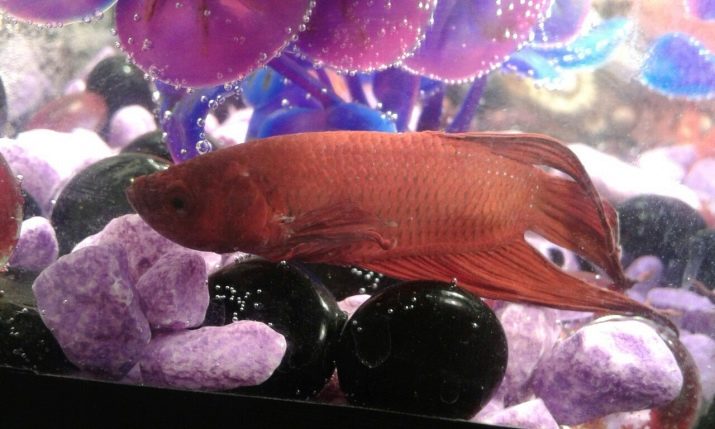
- Fins or tail stuck together... These are signs of illness or violation of the rules for keeping fish.You should definitely contact your veterinarian. If the tail and fins are peeling, it could be due to fighting in the aquarium or self-harm in a stressful situation.
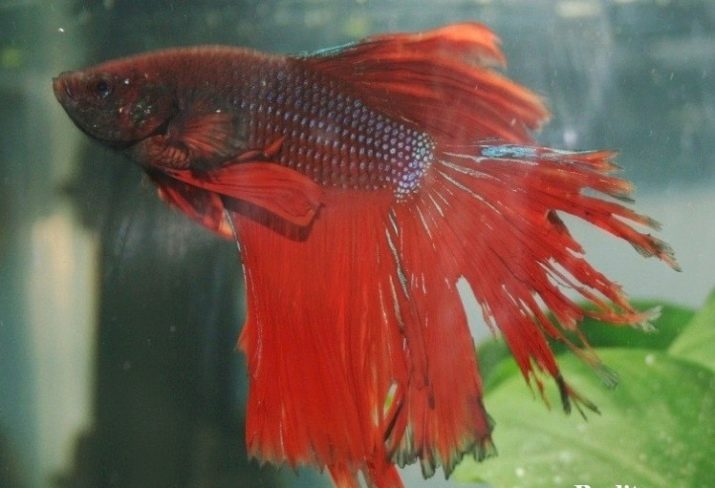
- The cockerel jumps out of the aquarium. Fighting fish are physically active, especially at a young age, they are often attracted to the world around them, which they try to observe through jumps. In addition, a frightened cockerel in a stressful situation can strive to jump out over the edge. Most often such attempts are made by fish kept in round aquariums.
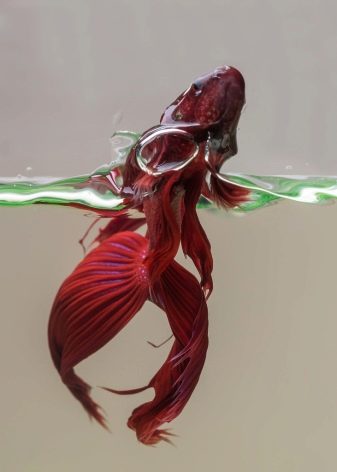
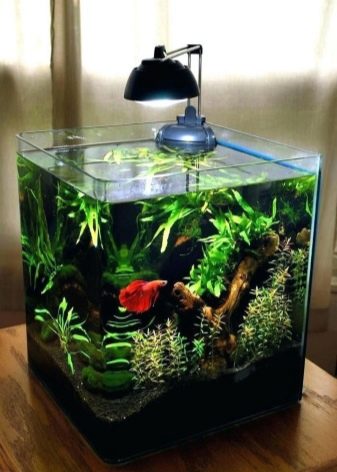
- The fish swims sideways on the surface. As with other labyrinth fish, this can mean bladder problems. But it happens that when feeding with flakes, the fish simply grab excess air. In this case, a fasting diet for 1-2 days helps.
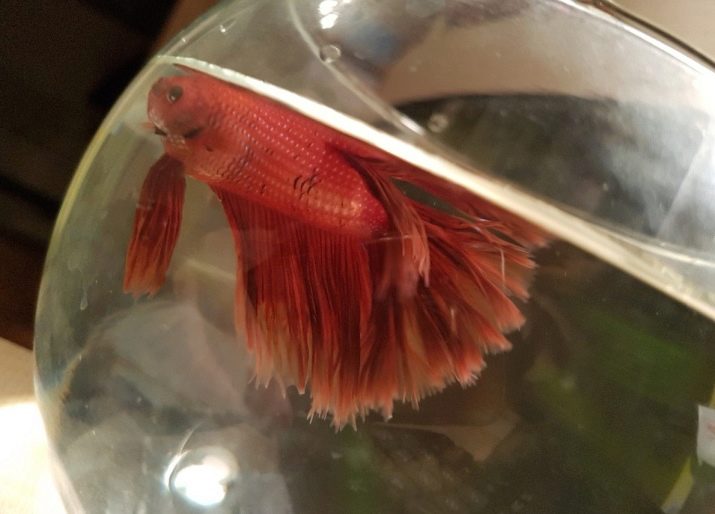
These behavioral problems and oddities of cockerels are not limited to, but in general, the likelihood of encountering them in the creation of good conditions is extremely small.
Advice
Males are quite unpretentious in keeping fish, able to easily live without food for 1-2 days. They are even advised to arrange weekly fasting days to help normalize the digestive system. The rest of the time food is given once, preferably at the same time.
If the pet inflates its gills and looks like a ball, it means that the fighting fish is ready for battle.

As a rule, this behavior is demonstrated at the sight of a potential rival, it does not indicate the presence of health problems. Some male cockerels show their affection to the female in this way. It is easy to verify the validity of this statement: just put a mirror against the glass of the aquarium, and the pet will immediately take an offensive position.
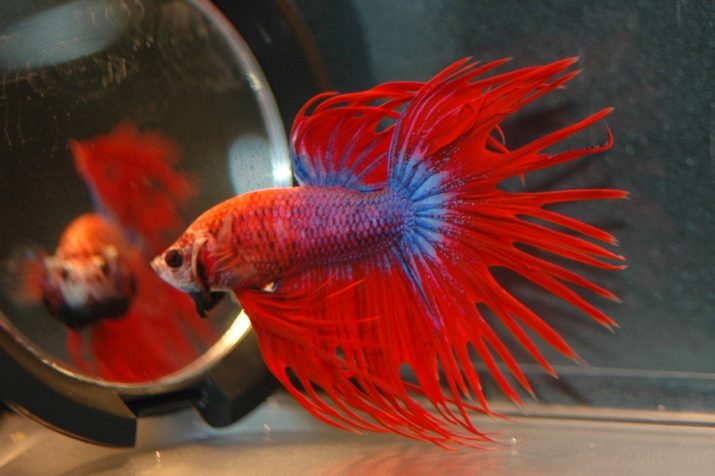
Males willingly allow themselves to be stroked, in general they are quite contact fish. But this cannot be abused, as it can damage the mucous protective layer on the scales, leaving the pet vulnerable to any infections.
A cockerel lying on the bottom is a rather strange sight. But if this behavior occurs in the short term, you shouldn't worry. This is how the fish rest. If such periods become long, it is worth showing the cock to the veterinarian.


Review overview
Considering the reviews of breeders about fighting fish, cockerels, it can be noted that almost all of them consider their pets, indeed, the best choice for home keeping. Absolutely everyone notes the incredible beauty of this species. Cocks with veiled tails look very beautiful and, moreover, do not need special conditions. They are so unpretentious that they can live at room temperature - the water does not need to be heated. Besides, since the fish breathes air, swimming to the surface, many keep it without aerators and other devices.
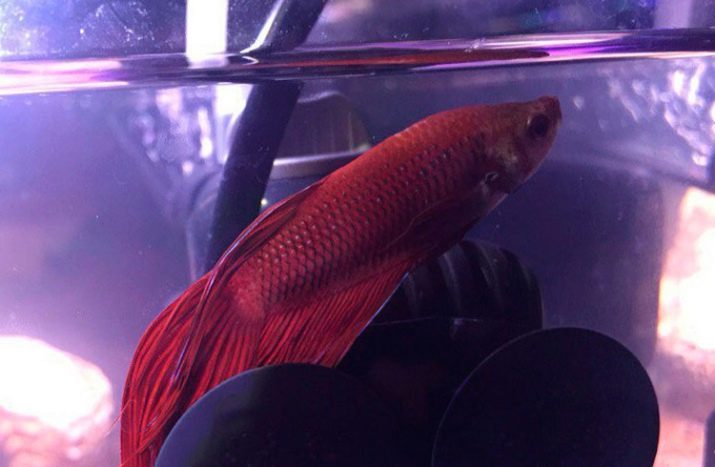
Aquarists note that males are easier to tolerate than other breeds in cramped conditions. In fact, the fish can live both in a decorative glass and in a round small aquarium. But only keeping it in a large aquarium helps to reduce its aggressiveness. Females - their lovers call them "chickens", have no less developed territoriality and may well become aggressors themselves. But if the reservoir is large, fish do not often meet, and they can coexist quite successfully.

According to the reviews of the breeders, it can be judged that cockerels are often chosen as the first pet for babies. Indeed, it is interesting to watch this beautiful fish, it easily tolerates childhood forgetfulness when feeding, it can go hungry for 1-2 days without harm to health. But it is worth considering that fish do not live long, and you will have to change pets quite often.
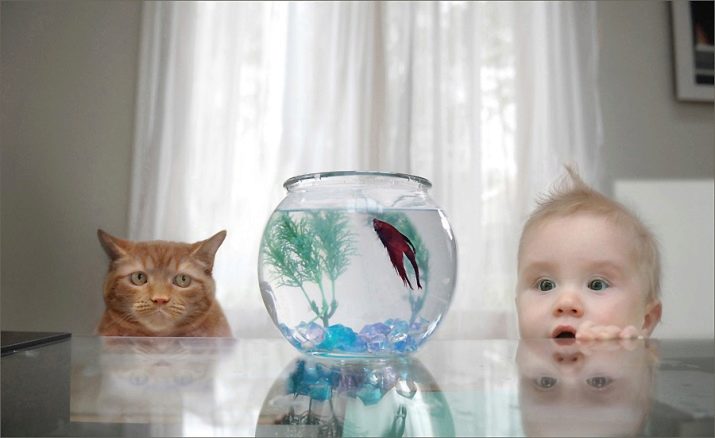
Not without negative reviews. Cockerels are not very easygoing, they can hardly be called the soul of a large team. This fish is at enmity with male and female congeners, and a stronger individual will surely win, leaving a weak brother without food, driving him into a shelter. Unaccustomed to such battles, novice aquarists are usually horrified and try to hand their pets back to the store. In fact, you just need to remember from the very beginning about the increased territorial instincts of the pet and not experiment with adding a company to the aquarium.
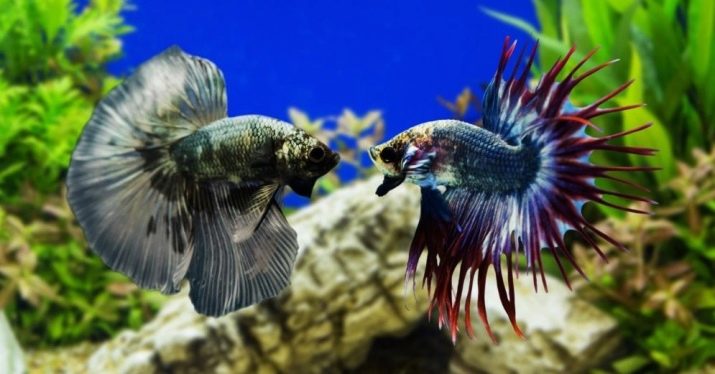
You will learn about the proper care of males in the next video.








